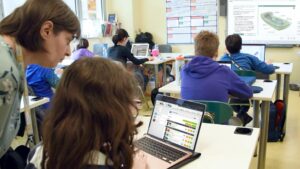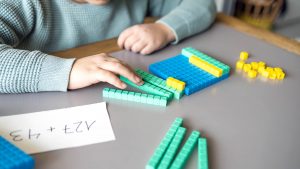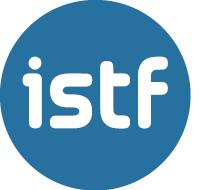Nanotechnology: A Potential Solution for Drought?
The introduction of new technologies might offer an unexpected and innovative solution to drought.
In recent years, severe droughts have significantly affected various regions of Spain, particularly in Mediterranean areas like Catalonia and Valencia, as well as parts of the south. This issue is likely linked to climate change, although other factors may also contribute. As a result, Spain is recognized as one of the driest countries in Europe, with estimates suggesting that 75% of its land could become desert by the end of the century.
Text by Clara Bosch Caro, student at Escola Vedruna (Vilafranca del Penedès, Spain) – Eureka Divulgadores 2024, Category 2 Winner.
13 de diciembre de 2024

Measures have already begun to conserve water resources and protect one of the planet’s most valuable assets. These methods range from public awareness campaigns to water desalination, water regeneration, and the digital management of water resources.
However, other potential measures have received little attention, either due to a lack of funding or because existing solutions appear to serve the same purpose. Nonetheless, one promising solution that could not only mitigate the effects of drought but also represent a significant scientific advancement is nanotechnology.
When we talk about nanotechnology, we refer to the manipulation of matter on an almost atomic scale. This article will explore two innovations that may mitigate the effects of drought, decrease water consumption, and enhance current measures: nanobubbles and water condensers.
Nanobubbles in Water
Nanobubbles are tiny particles of oxygen, measuring no more than 120 nanometers—about 2,500 times smaller than a grain of salt. Because of their tiny size, they have some special properties.
They have a strong negative charge, which helps them stay stable underwater while maintaining neutral buoyancy. This feature allows them to spread evenly throughout the liquid without rising to the surface for weeks or releasing gases. Moreover, their internal pressure causes them to create a negative electric charge, preventing them from clumping together. These remarkable features make it easier for nanobubbles to take part in various physical, chemical, and biological reactions.
When released, these nanobubbles help eliminate bacteria, parasites, and fungi, while also enhancing plants’ ability to absorb nutrients and boosting their metabolism. This technology, which is already being used, has the potential to save up to 25% of water while purifying it at the same time.

Moreover, using water that contains nanobubbles can lessen the need for certain pesticides, which helps reduce contamination in agricultural irrigation systems. This approach also allows crops to grow with less water, leading to significant savings and easing the pressure on various rivers and reservoirs.
Another use for nanobubbles is in wastewater treatment, where they assist in separating fats, oils, and floating solids. They also help prevent the formation of compounds that create unpleasant odors and cause corrosion, which can damage infrastructure. By improving and streamlining the water treatment process, we can speed up cleanup efforts and minimize the presence of certain contaminants.

Water Condensers: From Air to Water
The Water-Y project offers an ambitious and innovative solution to water scarcity in some regions of Spain and other countries facing similar challenges.
It originally aimed to produce individual water supplies with a unique bottle designed to create condensation. This bottle had plates that generated heat on one side and cold on the other, causing water to form inside. Eventually, the project shifted its focus toward agricultural applications.
Building on these principles, the team developed a water condenser that uses nanotechnology, making it more efficient compared to earlier models. This device captures moisture from the air and transforms it into liquid water through a cyclical process involving tubes, usually made of copper. While similar devices have existed, Water-Y has improved the design by coating the machine with organic nanomaterial made from rice husks. This innovation greatly increases its water absorption capacity, enabling it to capture up to 600 times more moisture.

With the help of this nanotechnology, condensers could change from being inefficient devices into popular tools for collecting water for personal use in impoverished areas or extensive agricultural fields. This shift would lessen the need to draw as much water from rivers and reservoirs and might even help control humidity levels in the air.
Beyond these initiatives, there are many other applications of nanotechnology that could help make drought conditions easier to handle, both directly and indirectly. This shows that with creativity, enthusiasm for research, and the right materials, we can find solutions to many everyday challenges. It is vital to keep an open mind and support scientific research. By working together and making a dedicated effort, we can tackle the water crisis we face.
WRITTEN BY Clara Bosch Caro
Student at Escola Vedruna (Vilafranca del Penedès, Spain).
Eureka Divulgadores 2024 Category 2 Winner.











Leave a Reply